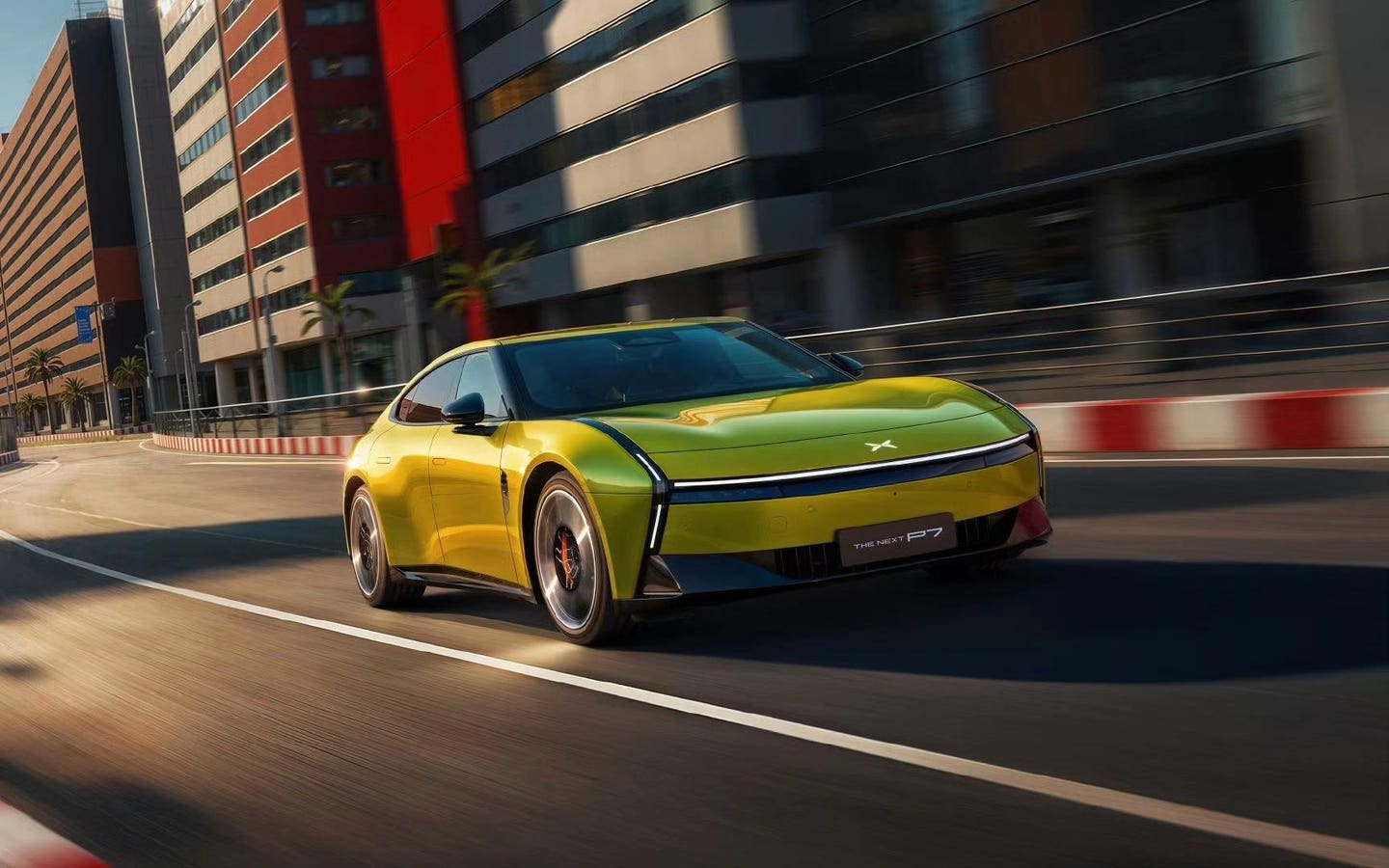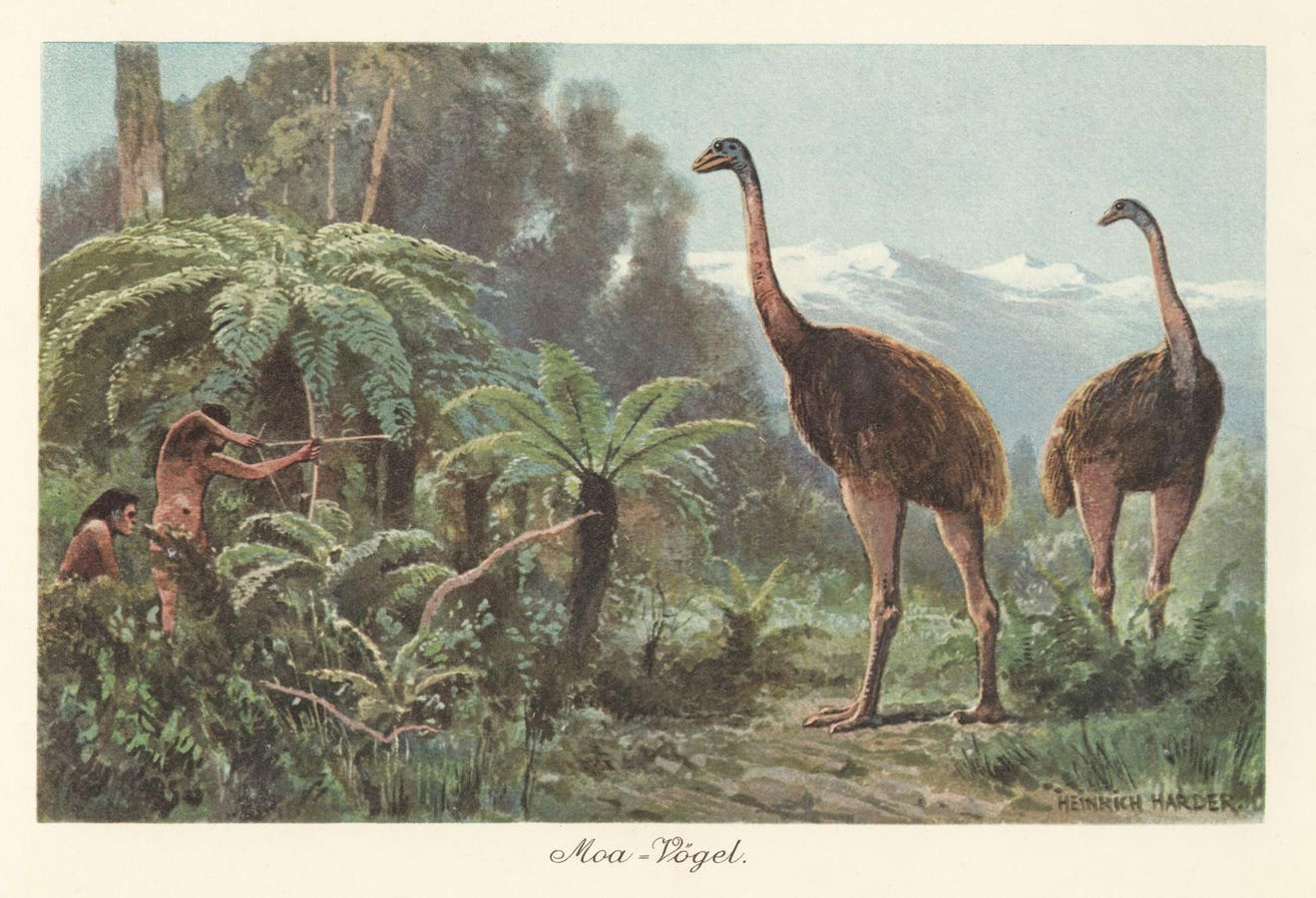XPENG is calling the P7+ the first AI Defined Vehicle
XPENG
If there’s one thing that has become clear in the last year, it’s that Chinese automakers have their sights set firmly on Europe for the electric car output, and particularly the UK. Without the huge tariffs of the EU and US, a general taste for premium vehicles, and a burgeoning EV market, Great Britain is a lucrative market, despite being right-hand drive. One manufacturer that is trying to differentiate itself amid the invasion of midsized SUV from China is XPENG. I caught up with Vice Chairman and President Brian Gu at the Festival of Speed in Goodwood to see how the company’s European plans are shaping up.
XPENG’s Rapid European Expansion
“We started in Europe about four years ago,” says Gu. Like many new EV entrants, the company of course started off in the EV early adopting market of Norway but has grown rapidly. “We have seen significant progress in the last 12 to 18 months. Our brand is now ranked as the number one Premium Chinese EV brand in Europe.” Gu classifies premium as cars over 40,000 Euros ($47,000). The company now sells its vehicles in 18 European countries, including the UK, and intends to expand that to 25 by the end of 2025. “The G6 and G9 both have been top sellers in their respective segments in some countries. The brand is being viewed as having a technology and premium position compared to other Chinese companies.”
The XPENG G6 and G9 have sold well in Europe.
XPENG
XPENG took its time before entering the UK market, however. “It’s a market that requires a lot of preparation,” says Gu. “It took us a long time to find the right partner and business model, and the right vehicle to enter the market with. We believe the G6 has that strength. It is a model that caters to a larger segment of the vehicle market in price, size, utility, and design, but at the same time, also showcases XPENG technology and quality. We have a huge commitment to the market by bringing more exciting future products in the next three years to the UK.” XPENG partnered with well-established distributor IM Group and plans to more than double its network in the UK by the end of 2025. The company has also made inroads in other right-hand drive markets including Hong Kong, Singapore, Malaysia and Australia. “We are entering markets where electrification is about to take off. Timing is important, focusing on markets where the early education has been done.”
Technology Is Central For XPENG
Gu sees XPENG’s focus on technology as the key differentiation for the company. “We went from a software defined vehicle to what we now increasingly call AI defined vehicles,” he says. “The investment into software innovation is going to differentiate XPENG.” China appears to be taking the lead in EV technology now in general. “This is due to several factors. One is that the Chinese market is the most competitive. The pace of change is so much faster. Only players that compete in China can win globally. Tesla performs well in China as well as globally. But other non-Chinese brands have not had such intense pressure and competition.”
The biggest area of near future technological competition will be self-driving cars, according to Gu. “This is going to be undeniably the mega trend in the next three to five years,” he says. “If you drive one of our cars in China, in a mass-produced vehicle, the autonomous driving technologies can already navigate most of the streets in China without any human interference. The progress in autonomous driving is accelerating. It will bring us to level three, and potentially level four, in the next three to five years. We are starting to see governments, as well as consumers, embrace this new technology. I would envision a world with driverless vehicles in the next three to five years. That is one of XPENG’s core focuses since the beginning of our company.”
But autonomous driving is only one way in which XPENG aims to continue to stay ahead in a highly competitive market, and one that hasn’t been well realized yet. “You must be different,” says Gu. “That’s why being the challenger is important. We want to bring a new approach to mobility. That’s why we focus on AI and autonomous driving. In the future, it will be more demanding for a player to stay competitive. You must be a scaled manufacturer, but you also need to have the full stack software and hardware capabilities. You must also have the global footprint to market your products.”
From Robots To Drones: XPENG Aims To Lead The Way In Mobility
XPENG has also been showing off a humanoid robot like the Tesla Optimus to illustrate its technology focus, but the product that is the most unusual is a six-wheeler vehicle that transports a drone in its back that can carry human occupants. “We call this the land aircraft carrier,” says Gu. “This is a product developed by one of our investor companies called AeroHT. They focus on the flying car and eVTOL business, but the first product will be this modular design with the large van that has the eVTOL drone inside that can be automatically unloaded and battery powered to fly up to 30 kilometers per charge. It’s not that far from reality. We have over 5,000 preorders already. We’re probably going to launch it for official order taking at the beginning of next year and aim to deliver the first product to customers before the end of next year.”
“This first product is to give people the ability to enjoy flying for the first time,” continues Gu. “It’s very difficult to have your own flying experience. This product is intended to give you the easiest and safest and most affordable way to fly your own device. It is focused on the sports and leisure market. It’s not seeking approval for use above population centers. That’s very difficult. We’re working with hundreds of Chinese cities to build flying parks in the outskirts, in the scenic areas on a lake or over a river.”
The “land aircraft carrier” is one of XPENG’s whackier forthcoming products
XPENG
The “land aircraft carrier” is another sign of how China has an increasingly wealthy middle class looking for leisure activities. “China is almost already the biggest market for luxury cars, clothing, and lifestyle items,” argues Gu. “There is a growing affluent population in China that can purchase these expensive products. But also, more importantly, Chinese customers are more progressive in terms of embracing new technologies. You saw this with EVs, mobile phones, online shopping, and online payment. All of that took off in China ahead of the global markets, because customers are willing to try them.”
However, XPENG has no plans to target the highest end of the market, unlike fellow Chinese brand Zeekr. “We are focused on catering to the largest, premium, tech savvy segments,” says Gu. “We don’t want to be a luxury item. We don’t want to price our products as expensively as possible, because that will reduce access to the technology to more customers. That’s why, in China, we focus on a segment between $20,000 to $70,000, and globally more expensive. It’s affordable premium.”
XPENG G6: Affordable Entry To Advanced EV Tech
Despite the focus on future technology like autonomous driving, robots and drones, XPENG is continuing to develop its core EV technology. The company was showing off the next generation of its G6 at the Festival of Speed, due to see its European debut in early September. One of the highlights is a switch to LFP batteries. This might seem like a step down market, but this car also pushes the envelope on technology, offering an 800V architecture that can hit 451kW when charging, taking just 12 minutes to go from 10 to 80% capacity.
The new XPENG G6 will charge at up to 451kW
XPENG
“There’s a global trend towards more LFP battery batteries,” says Gu. “Improving chemistry and technology make LFP a lot more competitive, with higher density. LFP batteries have improved on safety and charging speed. Some of the drawbacks of the past have been mitigated through recent technological advances. LFP has more advantages in cost as well as availability of supply. The combination of better safety and lower cost is why it’s really taking over the industry.” However, XPENG doesn’t design or manufacture its own batteries, focusing on powertrain developments.
It’s the bluesky tech that gets Gu enthusiastic about XPENG’s future, however. “We are most excited about the possibilities of AI, which is going to transform the way we drive,” he says. “The P7+, which we launched at the Paris Auto Show, we are calling the first AI defined vehicle, because, increasingly, the driving and the experience inside are going to be powered by AI. This will have the autonomous driving features powered by our self-developed AI models, and we’re going to offer this as standard to all customers. That’s why we say this is the first AI defined vehicle in the world. The combination of AI capabilities with smart, large-scale manufacturing will give you plenty of possibilities. Embodied intelligence will be the future.”









